Apple iPhone 14 Pro Max
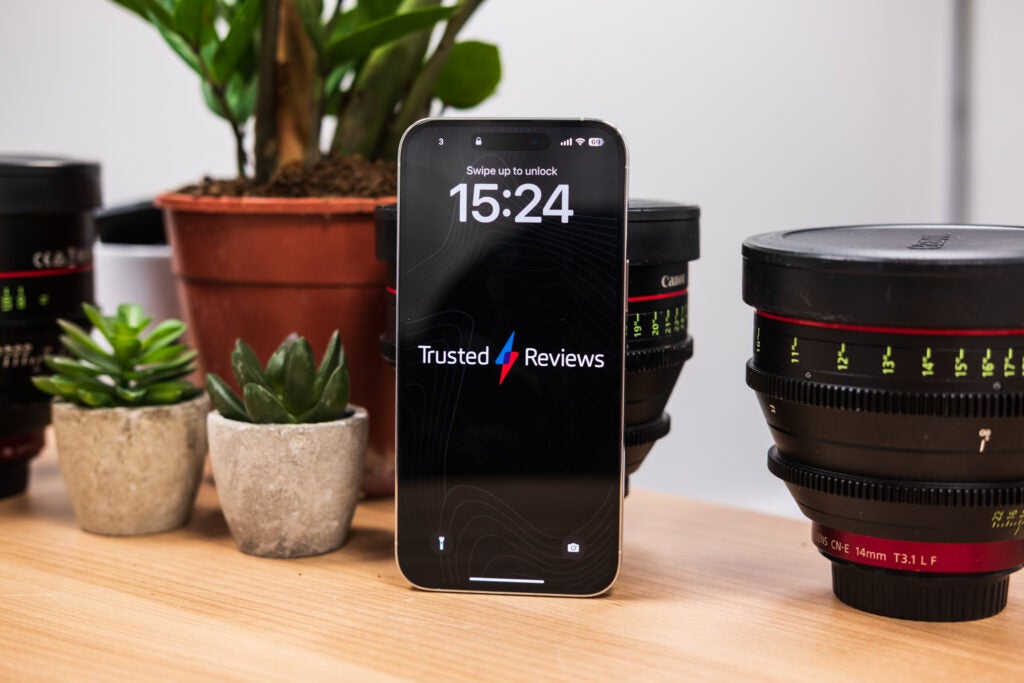

It’s big and heavy, but also fantastic in so many ways. The Apple iPhone 14 Pro Max is a true flagship phone.
Pros
- Stunning display
- Performance that should stay fast for a long time
- Reliable cameras in all conditions
- Long battery life
- Dynamic island is a great idea
Cons
- No big zoom camera improvements
- Uncomfy design without a case
Key Features
- Safety techSOS satellite network and Car Crash Detection
- High-end specsA16 Bionic chipset, 6GB RAM and up to 1TB storage
- Dynamic islandThe updated notch now serves an actual purpose
Introduction
The iPhone 14 Pro Max is no longer the biggest Pro-sized iPhone with the release of the 6.9-inch iPhone 16 Pro Max, but it still represents a fantastic buy if you can find it at a discount.
The iPhone 14 Pro Max’s combination of a large, gorgeous screen, impressive A-series power and all the bells and whistles of iOS – aside from Apple Intelligence, of course – make for a compelling iOS experience, even if it doesn’t have the titanium frame or upgraded 5x telephoto lens of newer models of Pro Max.
Two years on from its initial release, how does the iPhone 14 Pro Max hold up? Let’s dive in.
Screen and Design
- The large 6.7-inch display is a joy
- Dynamic Island makes use of the notch
- Boxy design can feel cumbersome
There are two main reasons to plump for the Max version of the iPhone 14 Pro over the regular 14 Pro, and the first of those reasons is the screen.
While the iPhone 14 Pro has a modest 6.1-inch OLED display, the Max has a far larger 6.7-inch display. A bigger display is, in my opinion, much better if you use your phone a lot for gaming, content creation or consumption. TV shows from Netflix or Disney, especially those rendered in HDR, look stunning on the roomy canvas and there’s so much more space to feel immersed in with games.

Of course, a bigger screen means a bigger phone and here’s where the iPhone 14 Pro Max falls down a little. The boxy, squared-off design suits the smaller phone far better – here it can make the 14 Pro Max a little cumbersome, with the sharp edges digging into my palms. A softer case will easily fix this, but it’s worth taking into account should you wish to use the phone without any added protection.
That is one area where a newer iPhone will serve you better, as the switch to titanium with the iPhone 15 Pro Max made for a much lighter, easier-to-hold smartphone.
The iPhone 14 Pro Max, like the 12 and 13 Pro Max before it, remains almost jewel-like in its design approach. The highly polished (and very fingerprint-prone) stainless steel sides glisten in the sunlight, while the range of three colours – along with a very gaudy gold – are muted and tasteful. I personally prefer the more fun shades you’d find on the iPhone 14 line, but the choices here, especially the new Deep Purple, do give off a more ‘professional’ vibe.
The biggest visual change this time around is the new Dynamic Island. This received a lot of stage time during the phone’s announcement and (dodgy name aside) it feels like a proper step forward for the derided notch.
Dynamic Island takes the notch that’s been present since the iPhone X, separates it from the top bezel and adds some clever software around it to turn it into a new little interactive area – while still hiding the array of front cameras and Face ID sensors.
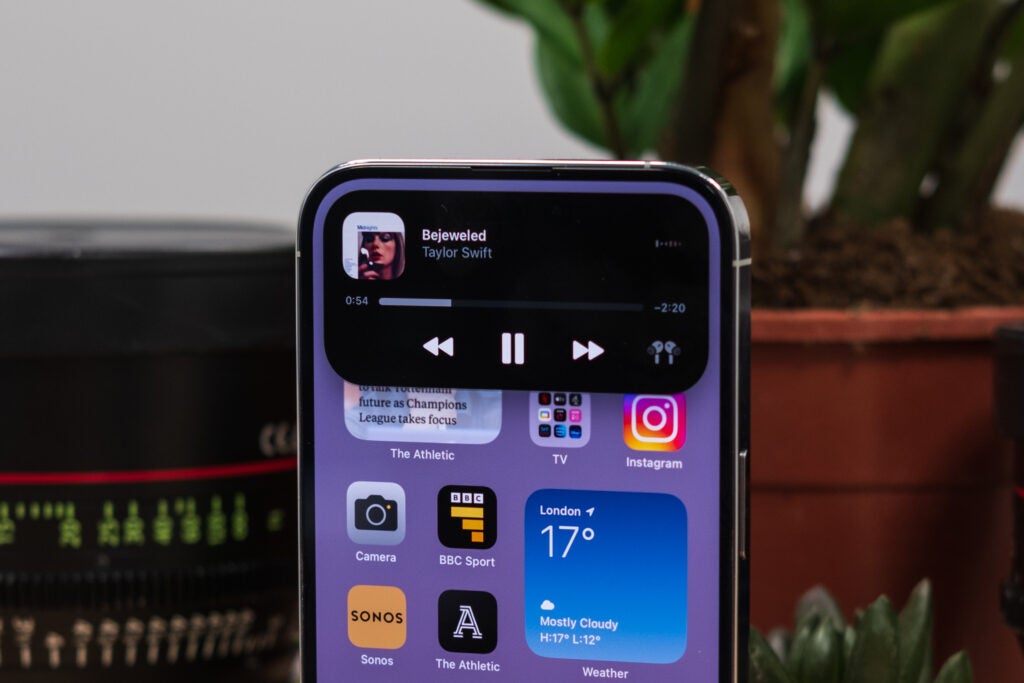
Everything from music playback controls, to alerts from connected AirPods to low battery warnings now pop up in the Dynamic Island – but regular notifications and messages, for instance, do not. This can create some confusing visual elements if two notifications from two different areas pop up at the same time.
For the most part, the Dynamic Island is a step forward. Having music control, or timer alerts, accessible in any app is great, and the addition of Live Activities in iOS 16.1 expands the functionality to third-party apps. In a year or so, I think we’ll really start to see the benefits of the change.

The rest of the screen is just as brilliant. The biggest upgrade is in brightness, both in HDR consumption and when you’re outside on sunny days. This is the brightest screen I have used outdoors, with it easily combating direct rays.
I delve more into the display in my iPhone 14 Pro review, but it really does tick all the boxes. The smooth adaptive 120Hz ProMotion display ramps up and down depending on what you’re doing, and it makes everything from scrolling up and down a webpage to gaming feel much smoother than on the 60Hz iPhone 14.
Apple has allowed the screen to drop to 1Hz for the 14 Pro series, enabling an Always-On option that keeps the screen always visible in a darkened state. While some Android phones do this by only highlighting certain parts of the display, usually the clock, the iPhone 14 Pro Max slows the whole screen down so that it just refreshes once a second.

I’ve been using the Always-On display for over a month now, and I both find it very useful and a little annoying. Once it’s enabled, you have very little customisation over it at all – you can’t tweak the brightness levels and whatever shows on the Lock Screen will be mirrored. If you have a loud wallpaper, this will always be visible.
Sometimes I have found it too bright, making the phone a distraction when it’s on a table. Though other times, especially when at a desk working, it can be handy always to see the time and other alerts. You can turn the feature off if it really annoys and it turns itself off when the phone is in sleep mode, so it won’t distract too much on a bedside table at night.
There’s also an effect on battery life by keeping the screen on all the time, though I noticed this far less on the Pro Max as opposed to the smaller Pro.

Camera
- Exactly the same camera arrangement as the iPhone 14 Pro
- 48-megapixel main sensor, improved selfie camera
- Telephoto zoom still not as strong as the competition from Samsung
The iPhone 14 Pro Max matches the camera spec of the smaller Pro, so you’re not getting any benefits by plumping for the bigger, more expensive option.
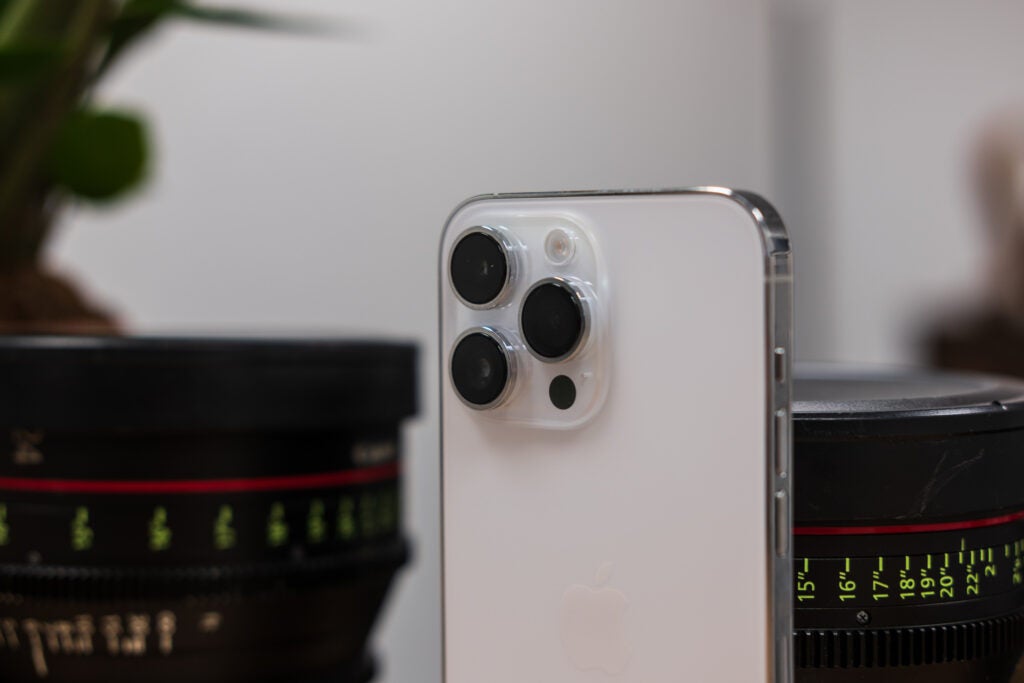
As with previous iPhones, it’s an easy, quick phone to shoot with and takes reliably excellent pictures in all situations. The addition of auto-focus on the front camera also helps it take great selfies.
In daylight, it can be hard to spot differences between the 13 Pro Max and the 14 Pro Max, but it does offer more room for creativity with a couple of extra pro-targeted features and improved low-light skills.
The iPhone 14 Pro Max marks the first time Apple has gone beyond a 12-megapixel sensor on a phone, replacing it with a completely new 48-megapixel version, For the most part, you’ll still be churning out 12-megapixel images, as it uses the pixel binning technique Android phones like the Samsung Galaxy S22 Ultra use. This combines four pixels into one in the sensor, giving you an effective larger pixel size without resulting in huge image sizes.

You can, if you want, utilise the full megapixel count by enabling the ProRaw mode. This will churn out large (often 80MB or more) images in the RAW format, allowing for more intricate and effective editing in apps like Lightroom.
After shooting with both the iPhone 14 Pro and iPhone 14 Pro Max for a month, I have come to the conclusion that for the most part, I shoot at 12 megapixels as the quality and detail are excellent and it’s just that bit quicker to shoot and easier to share. However, having the freedom to change when I know there’s a shot I will want to spend a little more time editing and tweaking is very welcome, and can result in some truly fantastic shots that are far beyond what I would expect from a phone.
The iPhone has long been excellent at daylight shooting and that doesn’t change here. Put a shot taken with the 13 Pro Max next to one from the 14 Pro Max and the differences are minimal until you zoom in, but the difference is far greater if you’re coming from an older device.

Detail in hair, plants and even the woollen strands on a jumper all are captured mostly well. Though there is certainly more processed sharpening in certain instances than before. Smart HDR levels out dynamic range well, dealing with trickier lighting conditions with ease and consistently churning out great images with accurate colours. The bigger sensor gives a more natural bokeh effect too, so you can get the silky blurry background with the foreground in focus without switching to the dedicated portrait mode.

When taking pictures of people, I still prefer images from the Google Pixel 7 Pro. Google does a better job of various skin tones and they often look a lot more natural.
It’s in tougher conditions where these pricier phones set themselves apart and the iPhone 14 Pro Max is excellent in low-light situations. I’ve found it doesn’t need to go into the Night Mode as often as the past few iPhones and when it does, it requires less time and light to produce usable results. Photos taken at night are universally very good: detail is retained without noise, colours are a little brighter without looking gaudy and skies retain the deep night sky colours. The 12MP ultrawide camera is better at night too, offering more versatility.
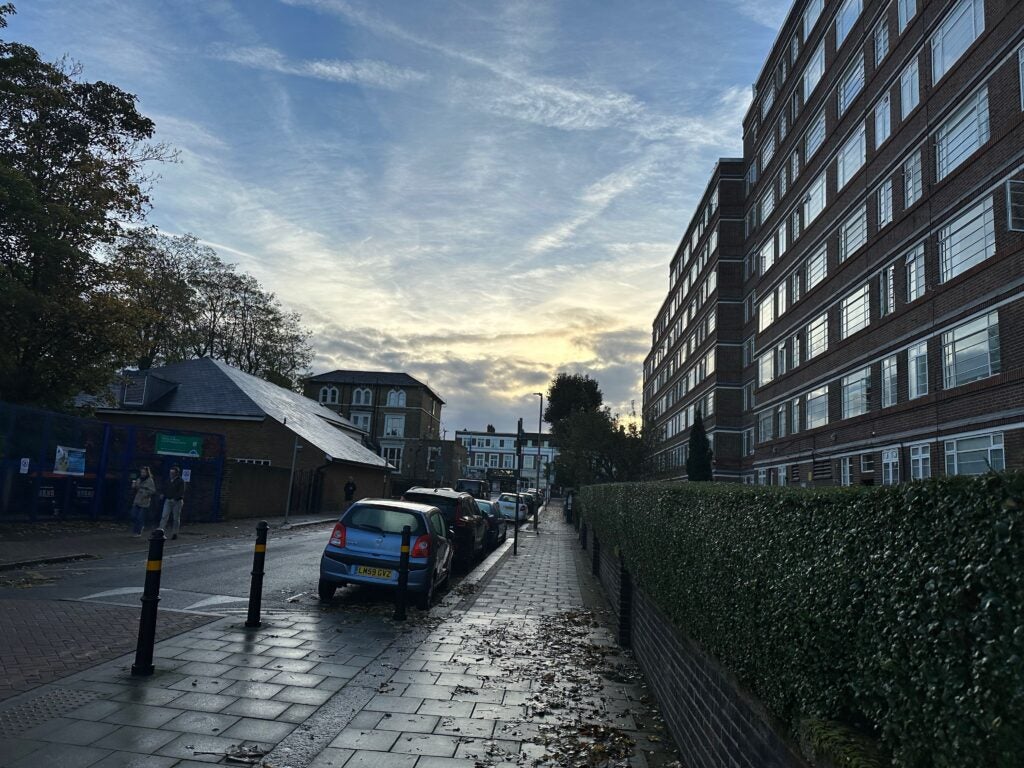



There are no changes to the 12MP telephoto camera, and while the zoom is on par with phones that don’t utilise a periscope arrangement, it doesn’t come anywhere close to competing with the Samsung Galaxy S22 Ultra once you push past the 3x range. Apple has added a new 2x zoom option, which utilises the middle 12-megapixels from the 48-megapixel to crop in.
No major changes have been made to make the videography experience better here, yet it still maintains its lead as the best phone for capturing video on the market. Smaller tweaks include 4K support in the gimmicky Cinematic Mode and a new Action Mode that stabilises video if you’re moving quickly at the expense of low-light performance.
Performance
- The A16 Bionic chipset is a fantastic performer
- 6GB RAM, up to 1TB storage
- No SIM slot in the USA
One of the more surprising aspects of the iPhone 14 range is the removal of the SIM slot entirely in the USA, forcing users to switch to eSIM. It seems like all major carriers are supported and the process of switching from a physical card to a virtual one is straightforward.
My UK review unit sports a SIM slot like all previous iPhones, and I don’t feel the tech is anywhere close to being as advanced here. While Vodafone (the network I reviewed the phone on) supports it, others don’t. Three, for example, is a popular network in the UK and currently doesn’t support eSIM.
Like the removal of the headphone jack and the charging plug from the box, this feels like a change that will permeate the high-end phone market in the coming years.

US models benefit from mmWave 5G, a tech that’s not available on any network in the UK so is missing from these units. UK users will still get 5G, just the sub-6Ghz form.
Another US (and Canada) only feature, at least for now, is Emergency SOS – a satellite service that’ll let you contact emergency services even when there’s no phone network signal. It’s hard to judge this without trying it, but it’ll be welcome for those exploring places without cellular connections. Car Crash Detection is another safety feature that’ll alert selected contacts if the phone detects you’ve been in a collision (though it does seem to have been set off by people on rollercoasters…).
Inside the phone is the A16 Bionic chipset. It is paired with 6GB RAM and storage options ranging from 128GB to 1TB. If shooting a lot of RAW photos and ProRes video are going to be on your to-do list, you’ll want to choose one of the higher storage varieties. This chip will soon be leapfrogged by the new A17 Bionic, but performance is still at such a high level that I really don’t think that will be a problem.
Performance is excellent – just like iPhones have been for years. There are no obvious real-world benefits of the A16 chip I could notice in my regular use, but the focus on the neural learning cores will keep AI elements of the software fast for the next couple of years. It’s a fantastic choice for gaming, especially with the wealth of titles available on Apple Arcade and the fantastic GPU performance.
Gaming is made better by the loudspeakers, strong Wi-Fi connectivity (the lack of WiFi 6E is odd considering it’s available on the new iPad Pro models) and, as I mentioned above, the great screen.
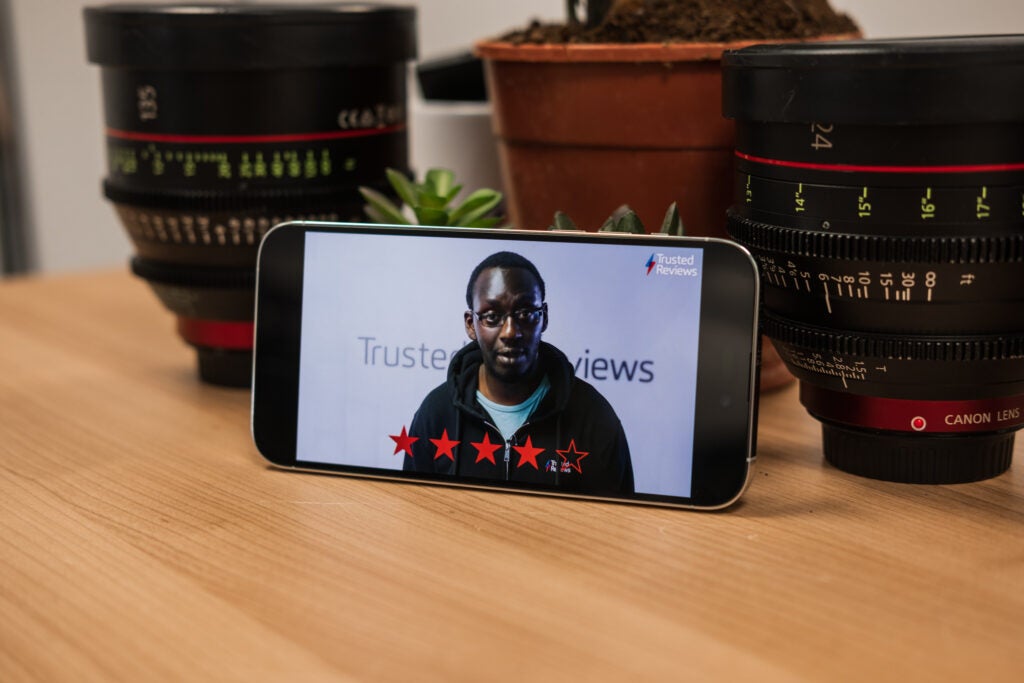
Battery Life
- No charger included
- Qi, MagSafe and wired charging options
- Charging speeds and endurance similar to 13 Pro Max
The iPhone 14 Pro Max might not be the best new iPhone for battery life – that accolade goes to the iPhone 14 Plus – but it’s a phone that’ll go the distance, and comfortably outpaces Android phones.
I used the iPhone 13 Pro Max solidly for a number of months after release and I loved how long it would last between charges. I would often have 30% left after a busy day, and there were numerous instances where I could go two slower days without reaching for the charger.
Having used the iPhone 14 Pro Max for 10 days, the battery life is similar but not quite on par with the 13 Pro – at least with the display always on. Disable that feature and the battery can match that of its predecessor.
I’ve found that the iPhone 14 Pro Max runs down quicker than the 13 Pro in everyday use, yet in singular tasks, it lasts longer. This is likely down to the brighter screen sucking up more juice. Streaming looped video lasted around 90 minutes longer on the newer model, a benefit of the more efficient chip.
How long the iPhone 14 Pro Max will last for you will really depend on how hard you push it, and what tasks you do with it. If you lower the brightness, limit some of the screen features and avoid intensive tasks like high-end gaming then it’s a two-day phone. Stream lots of HDR video, shoot RAW photos and hammer 5G and you’ll be juicing up before you go to bed.
There are myriad ways to charge the iPhone 14 Pro Max. MagSafe and Qi are the two wireless solutions, while the Lightning port provides the wired option. It looks like this will be the final iPhone generation of the old, slow port with USB-C likely to take its place in 2023 on the iPhone 15 series.
I haven’t found charging to be any quicker this time around, with a 50% charge in roughly 30 minutes (just as Apple claims) and a full 0-100% taking between 92 and 100 minutes. This matches my tests with the 13 Pro Max.
Latest deals
Should you buy it?
You want a great display
The 6.7-inch OLED panel is great. It’s big, has a fast refresh rate and can get very (very) bright
You want a phone that’s comfortable to hold
While I love the flat sides and boxy look of the smaller Pro, it’s quite uncomfortable at this larger size.
Final Thoughts
It’s no longer the best iPhone in the market, but the iPhone 14 Pro Max remains a powerful, big-screen device with long battery life and fantastic cameras, especially if you can get the phone at a discount.
There are some simple changes that could make it even better, though. The boxy, straight-edged design doesn’t suit the large size and the Lightning port feels antiquated for a modern phone – both issues that were fixed with the subsequent iPhone 15 Pro Max.
Newer models of Pro Max also offer upgraded telephoto performance from a boosted 5x sensor, more power under the hood and, of course, Apple Intelligence. But, if you can do without the very latest and greatest in tech, the iPhone 14 Pro Max remains a tempting option.
How we test
We test every mobile phone we review thoroughly. We use industry standard tests to compare features properly and we use the phone as our main device over the review period. We’ll always tell you what we find and we never, ever, accept money to review a product.
Used as main phone for more than a week
Taken hundreds of photos in various conditions
Compared against the iPhone 13 Pro Max
FAQs
There is no charger in the box, just a USB-C to Lightning cable
There are four hues available: Deep Purple, Space Black, Gold and Silver
Trusted Reviews test data
Full specs
The post Apple iPhone 14 Pro Max appeared first on Trusted Reviews.
Source Trusted Reviews ,Home Appliances Reviews






No comments